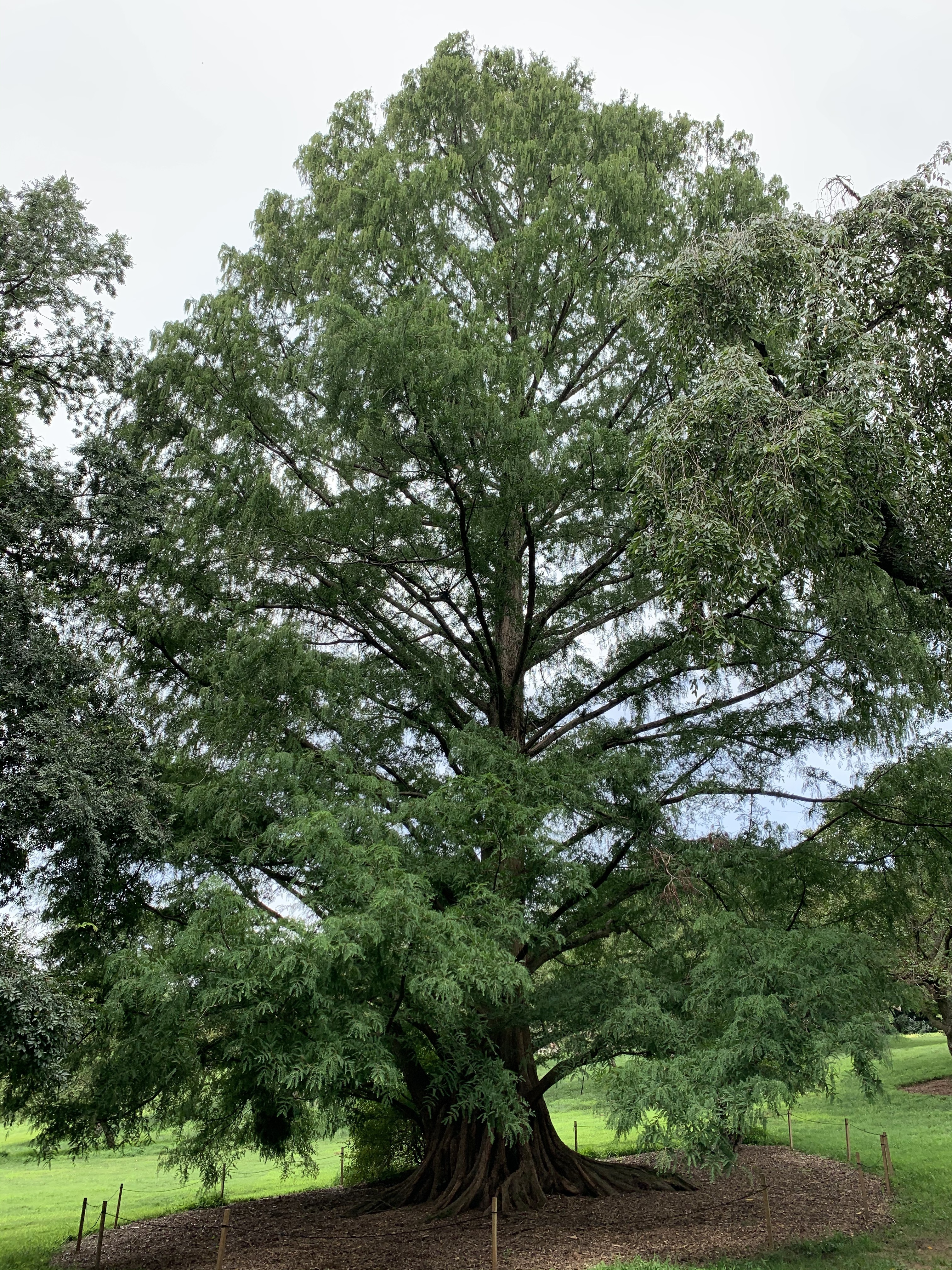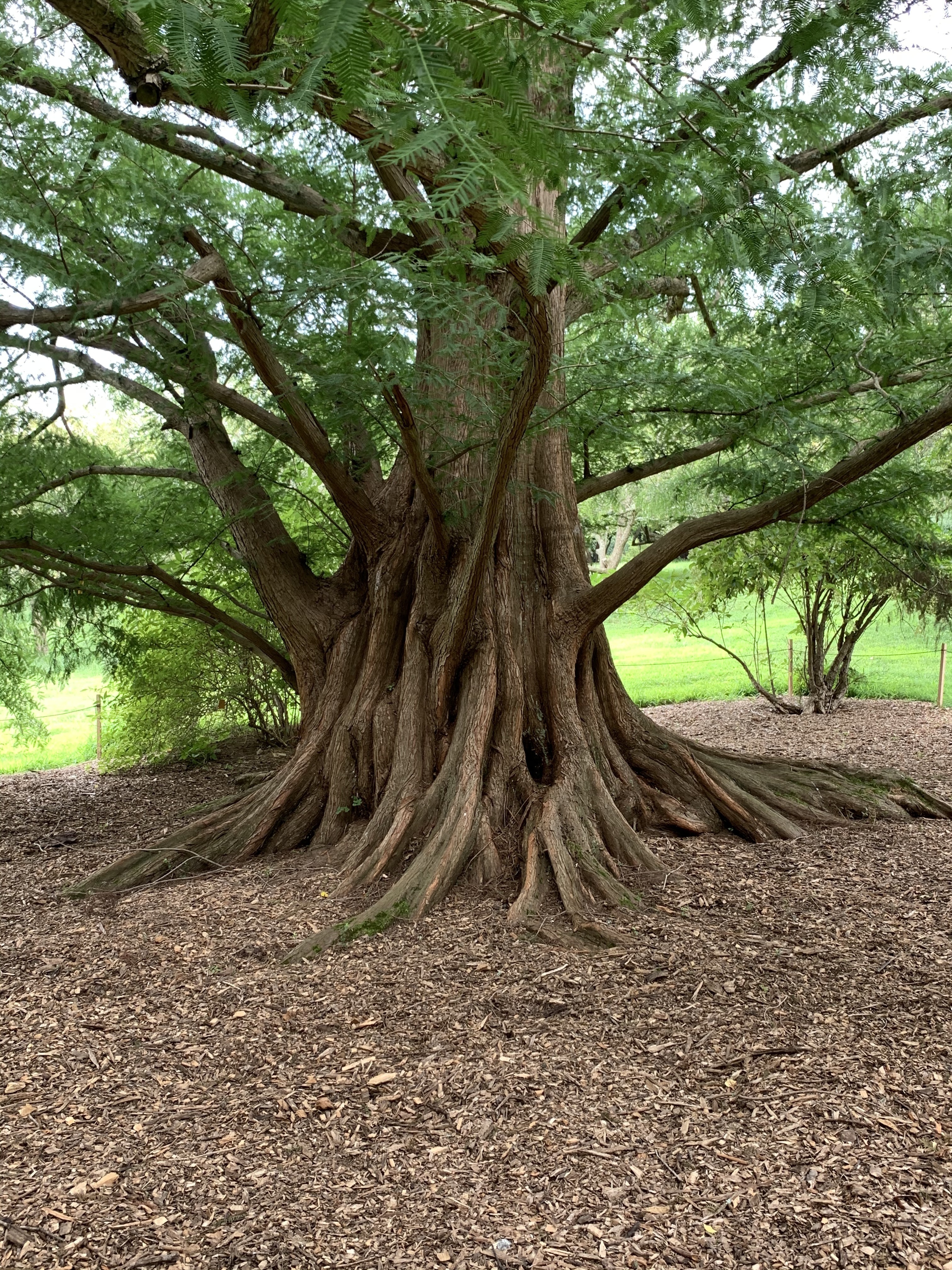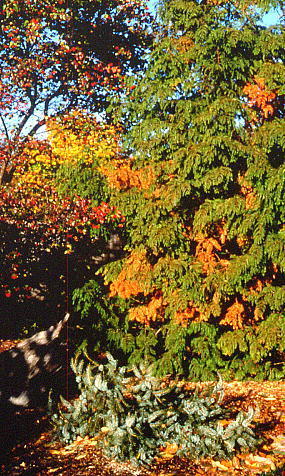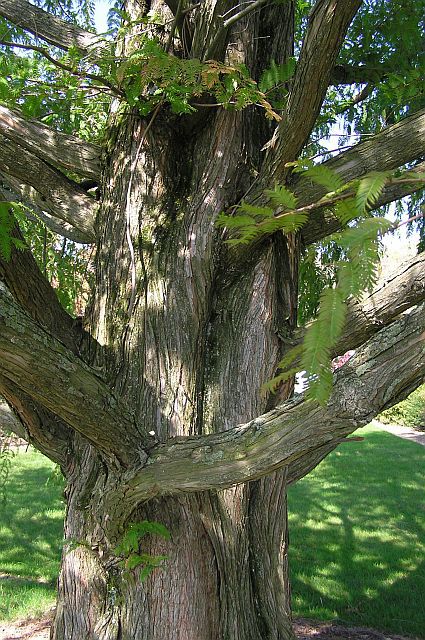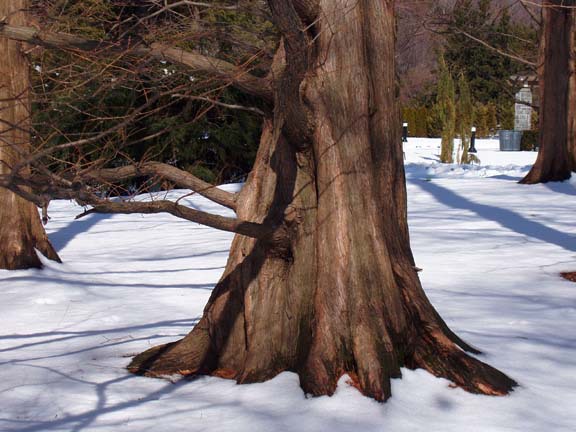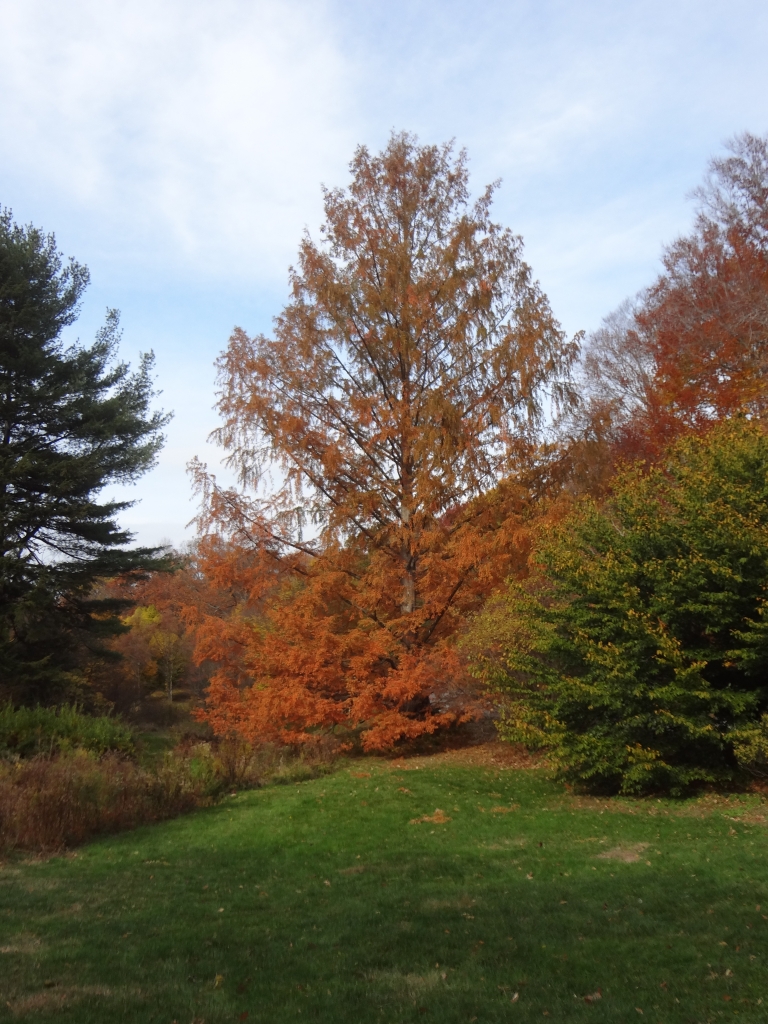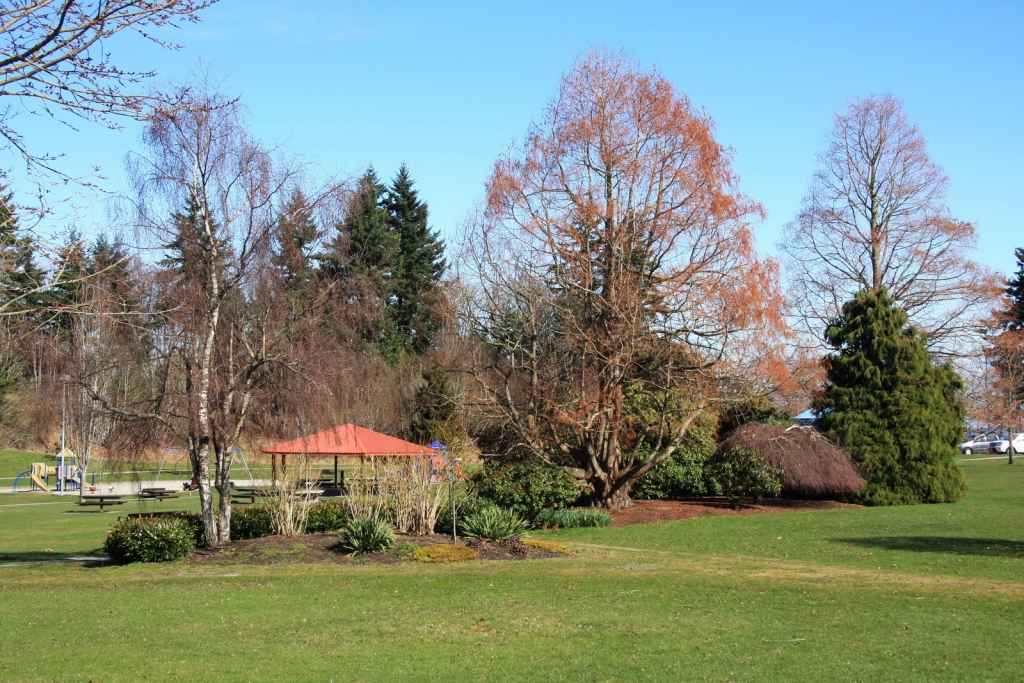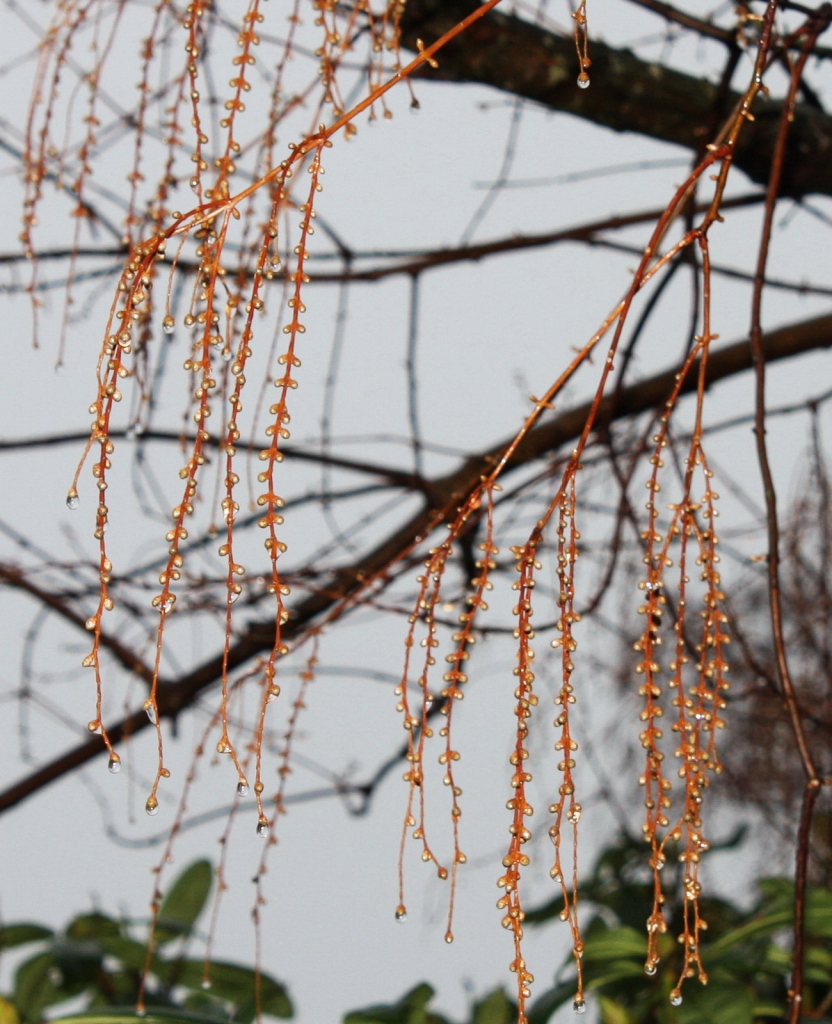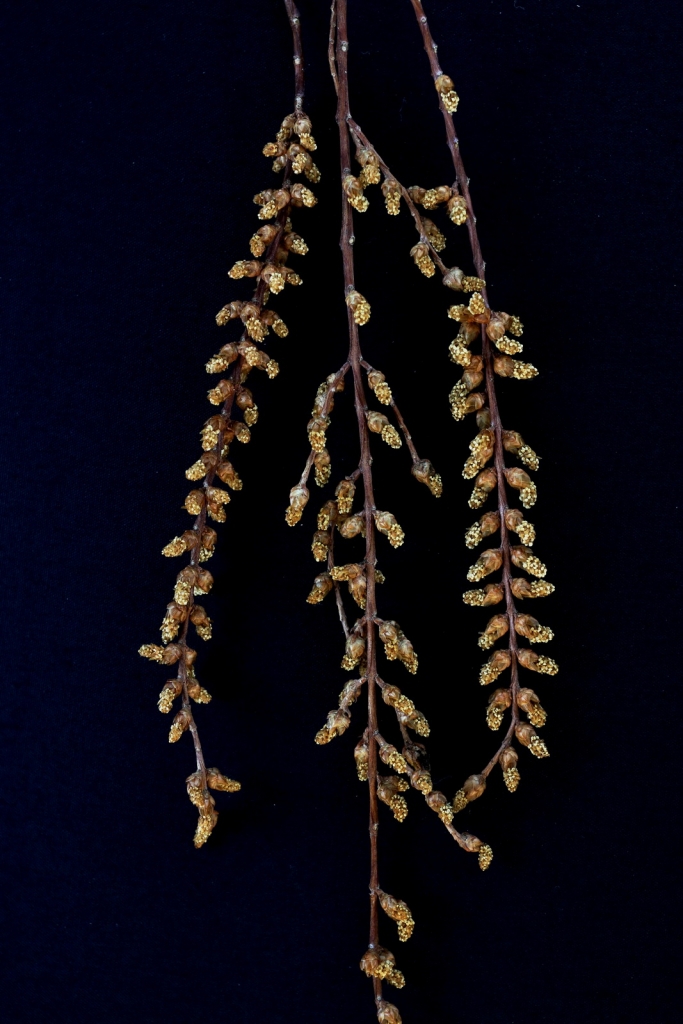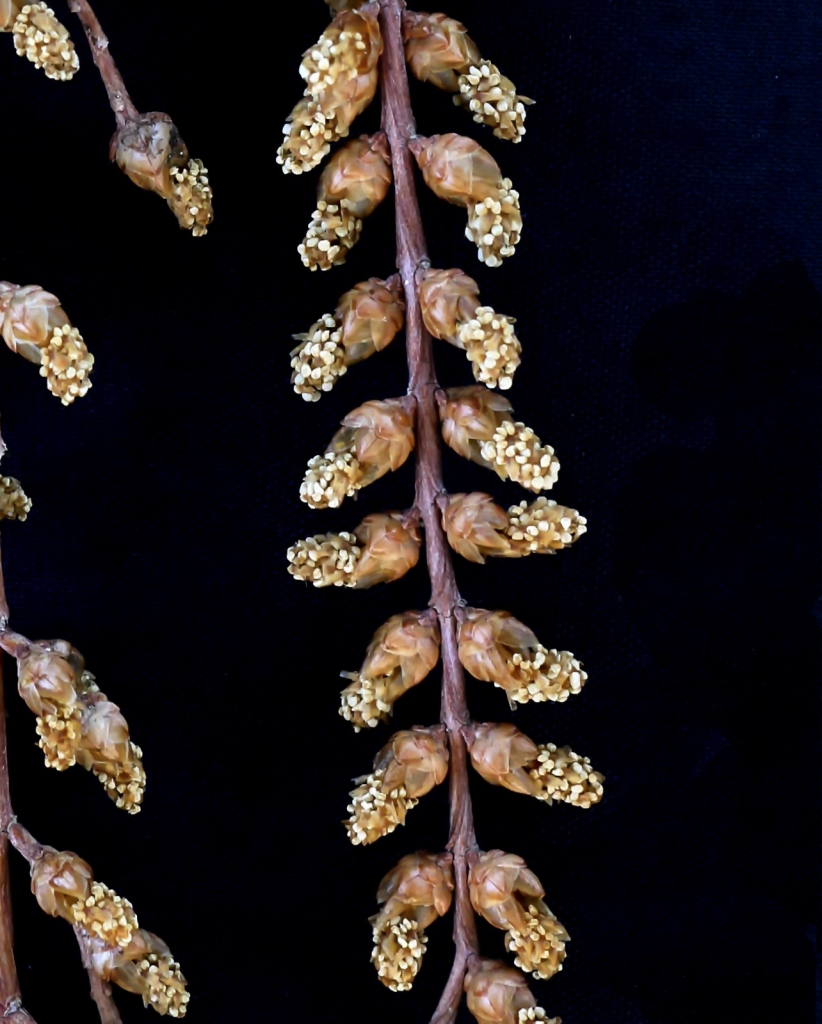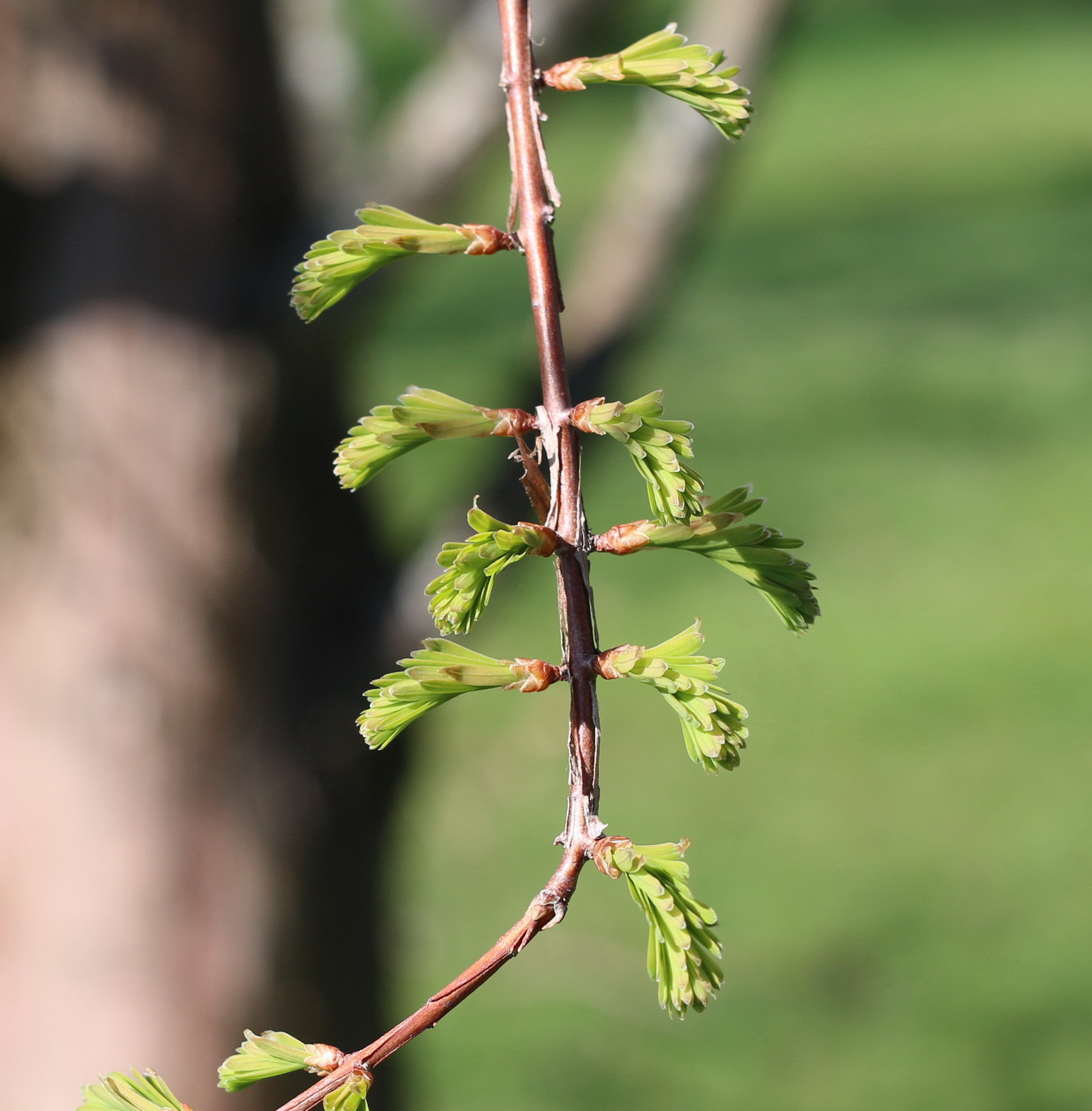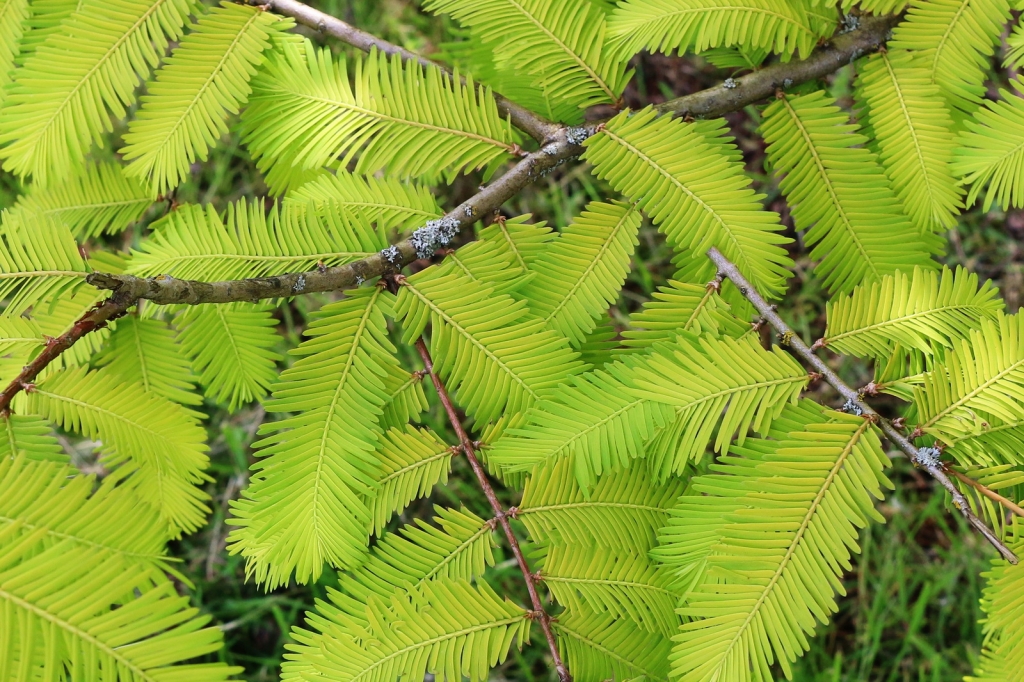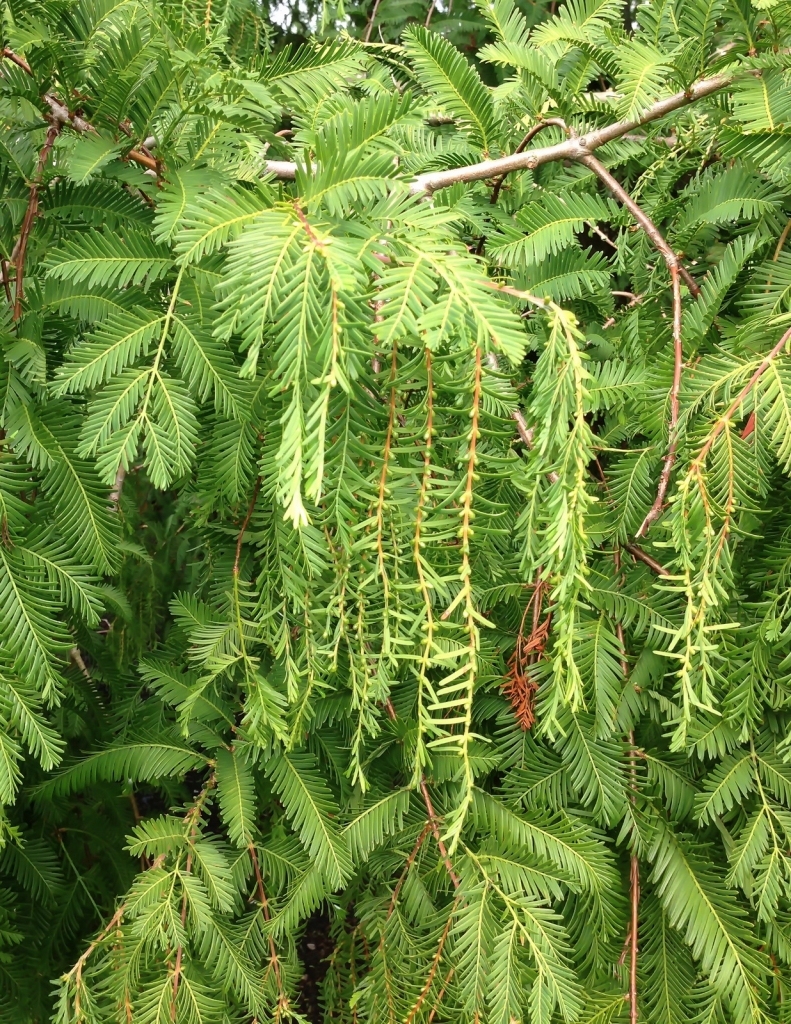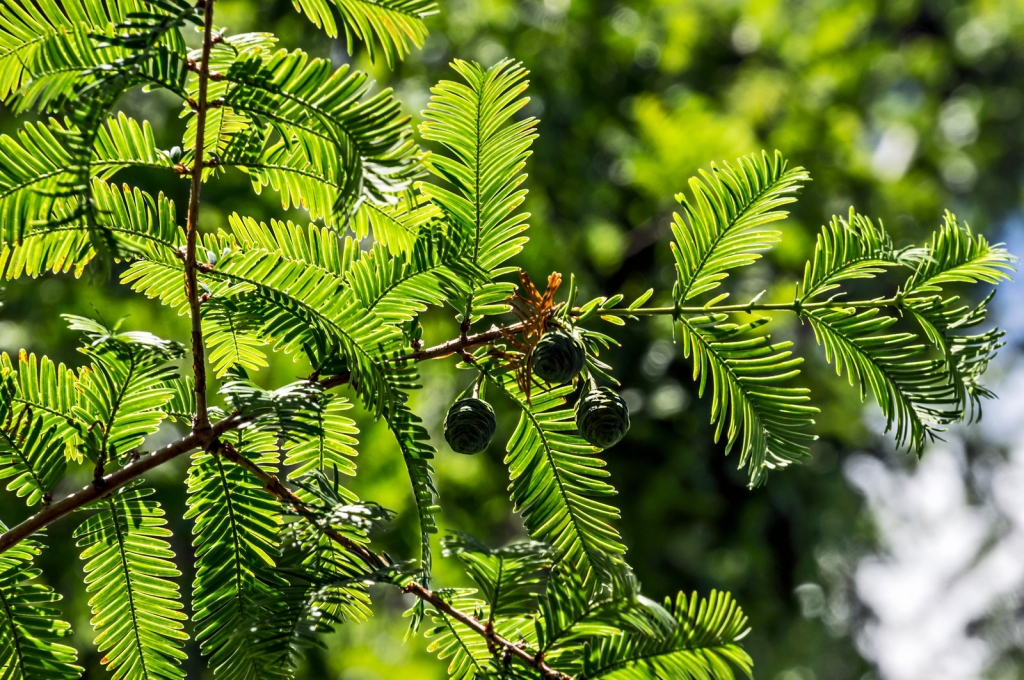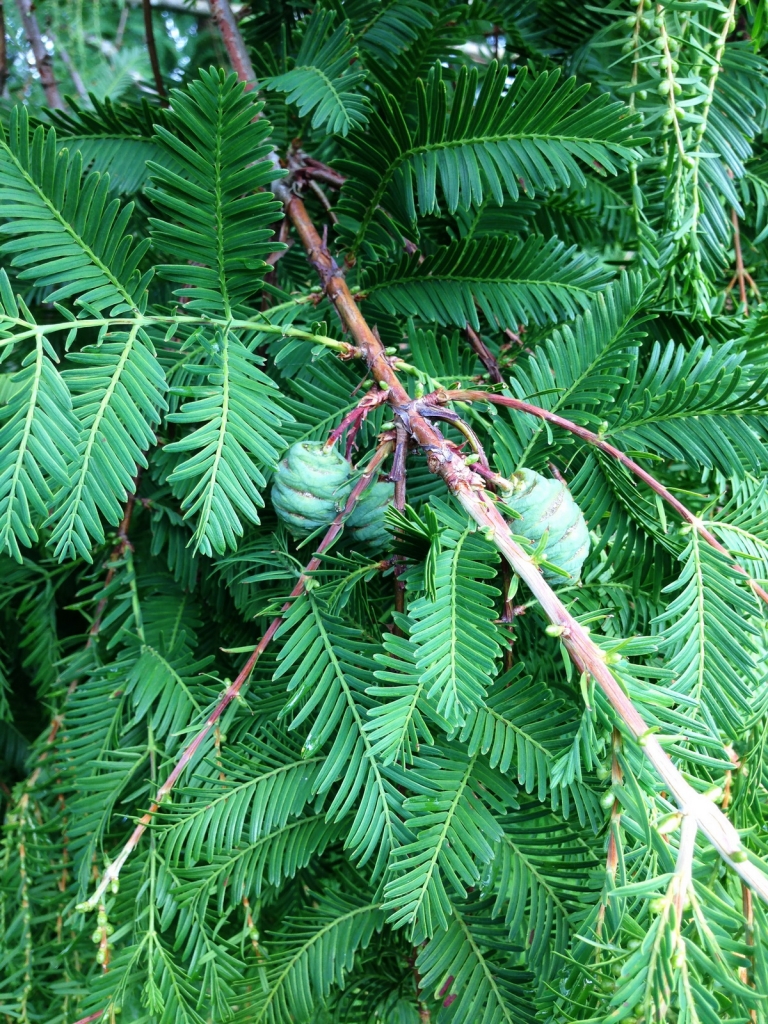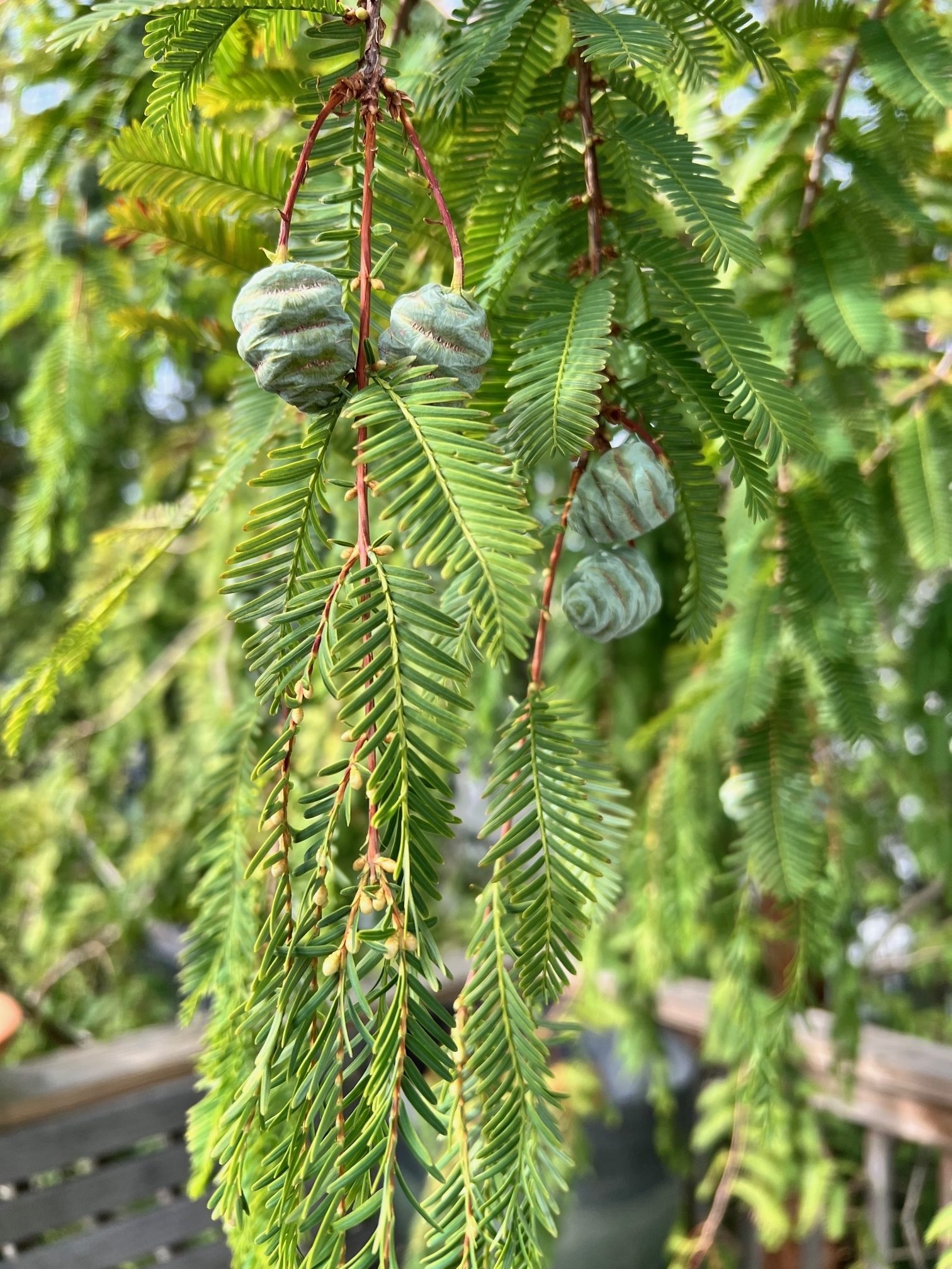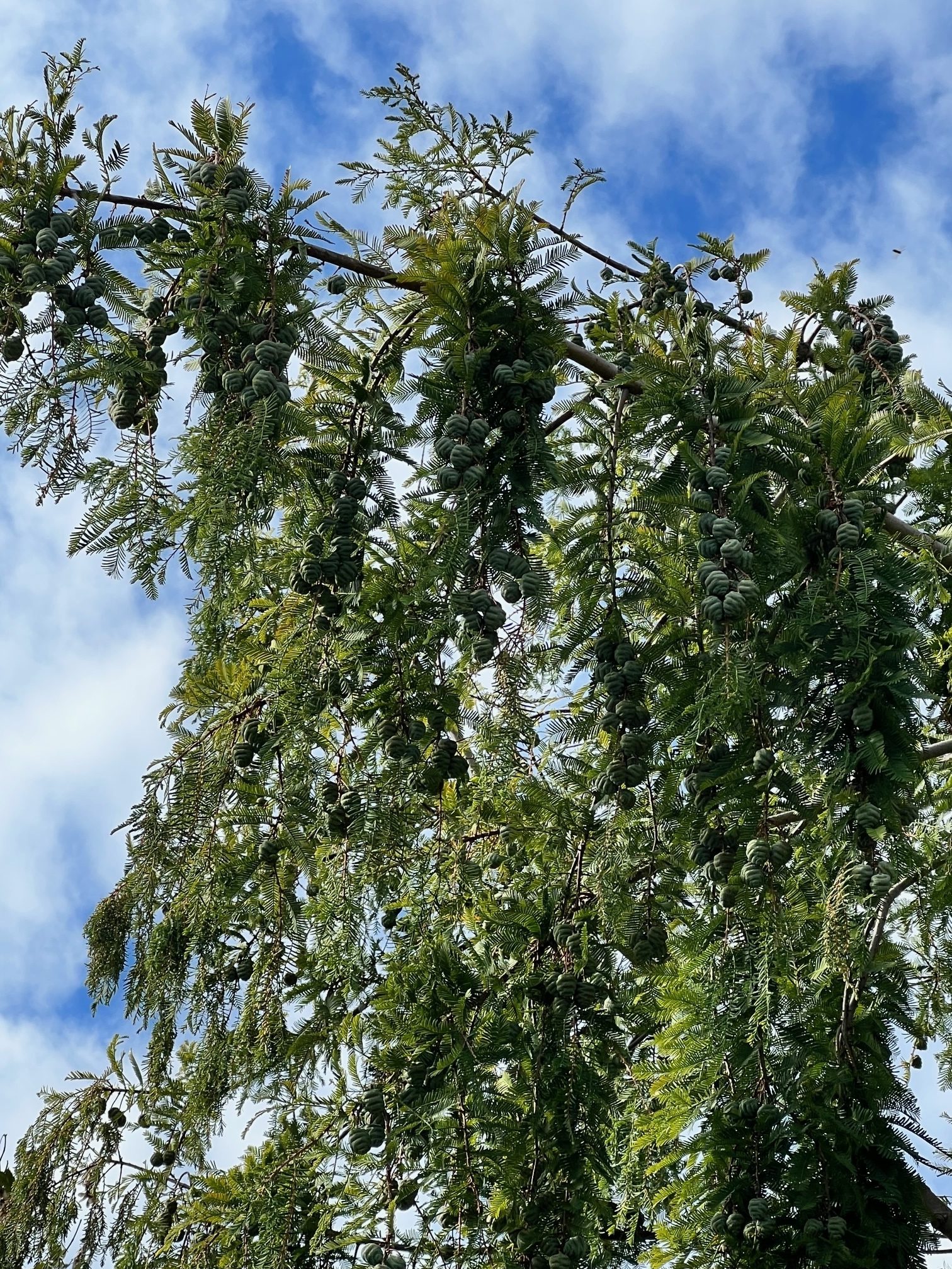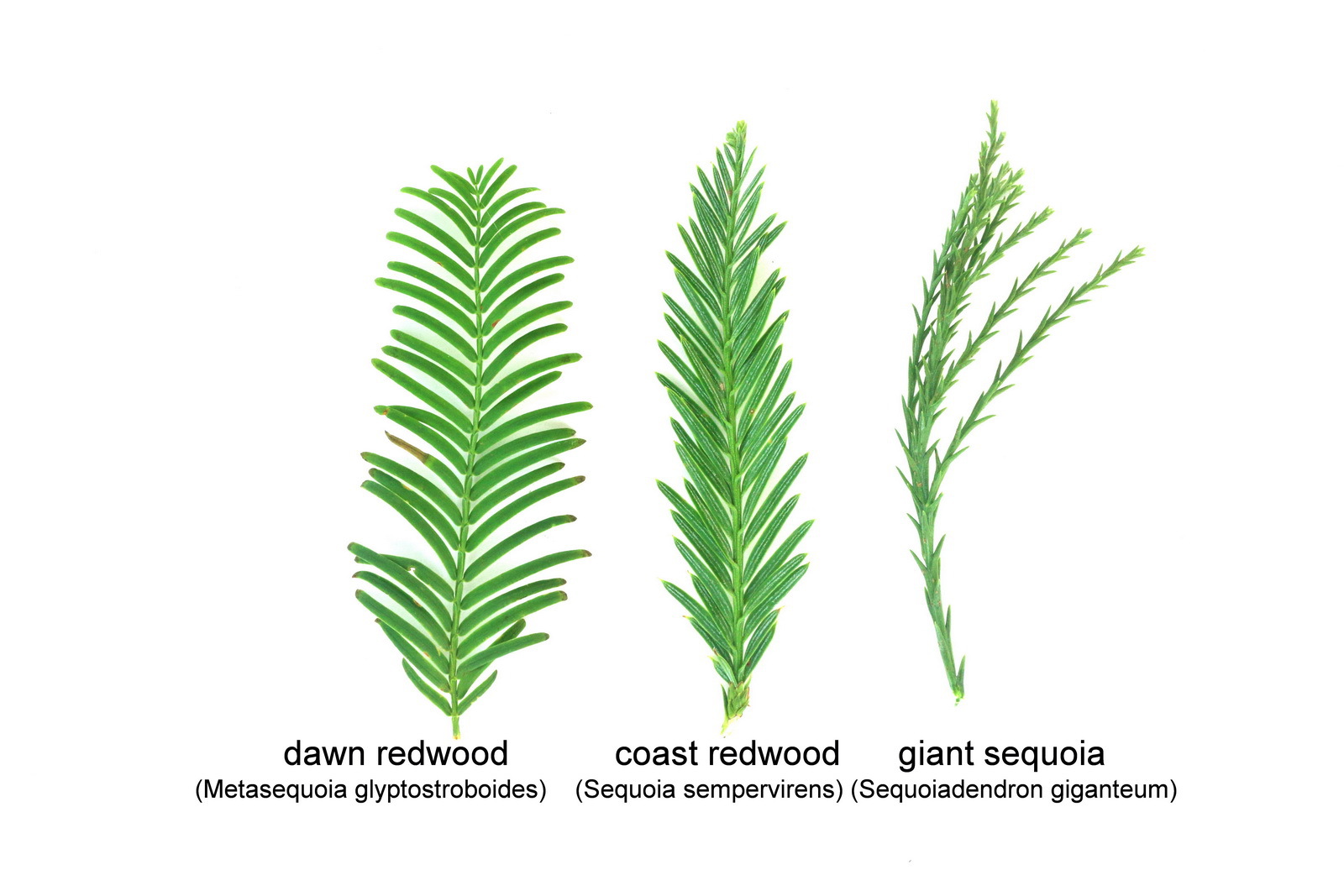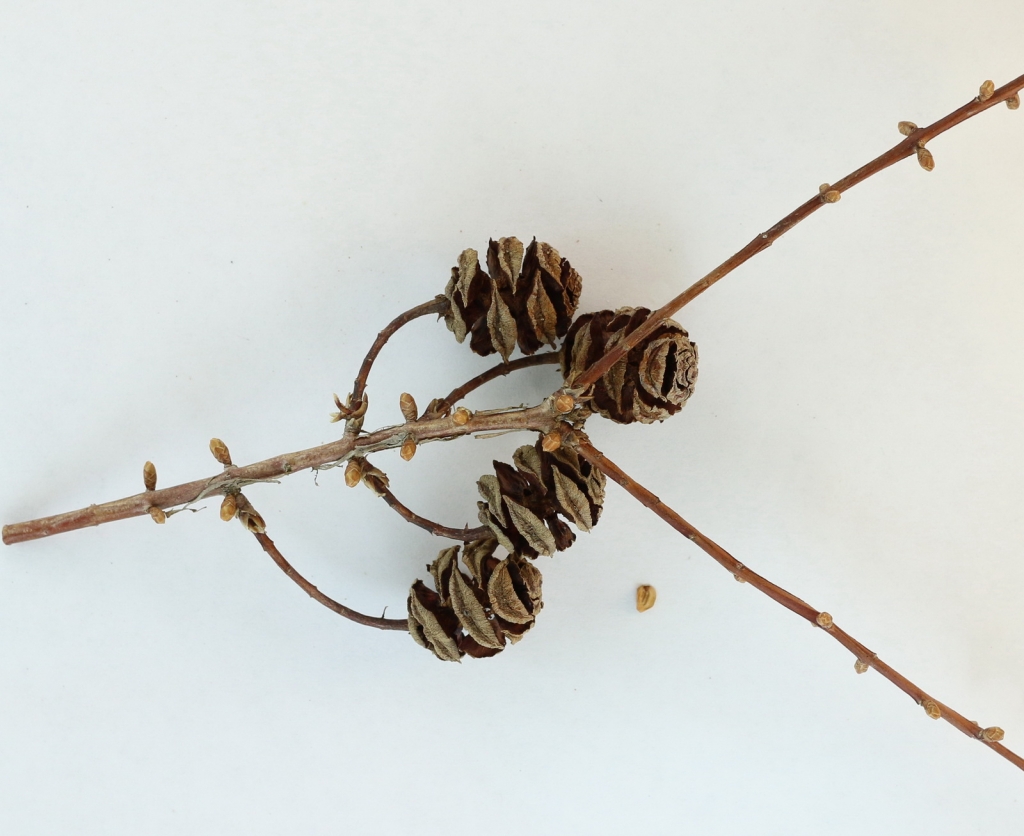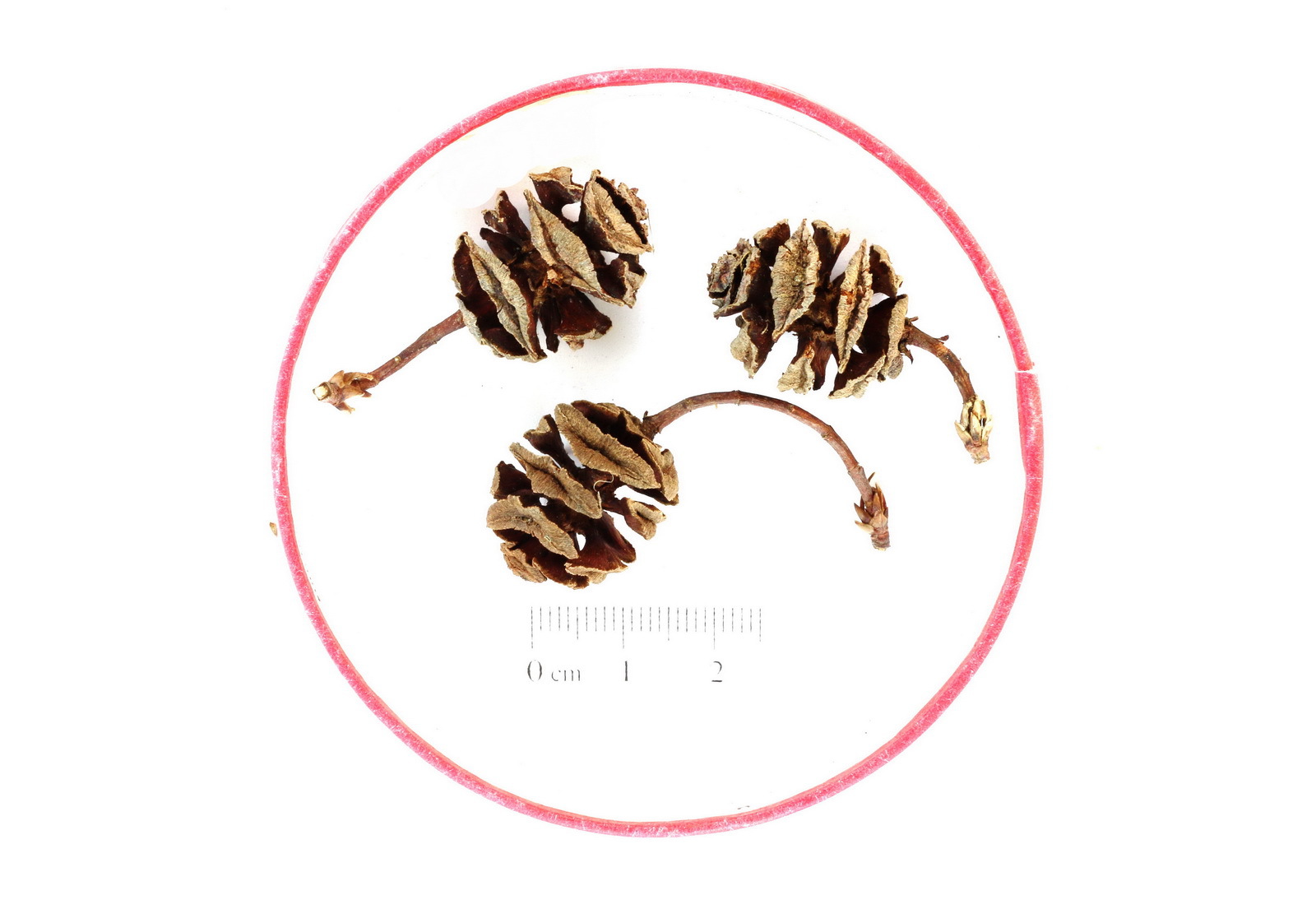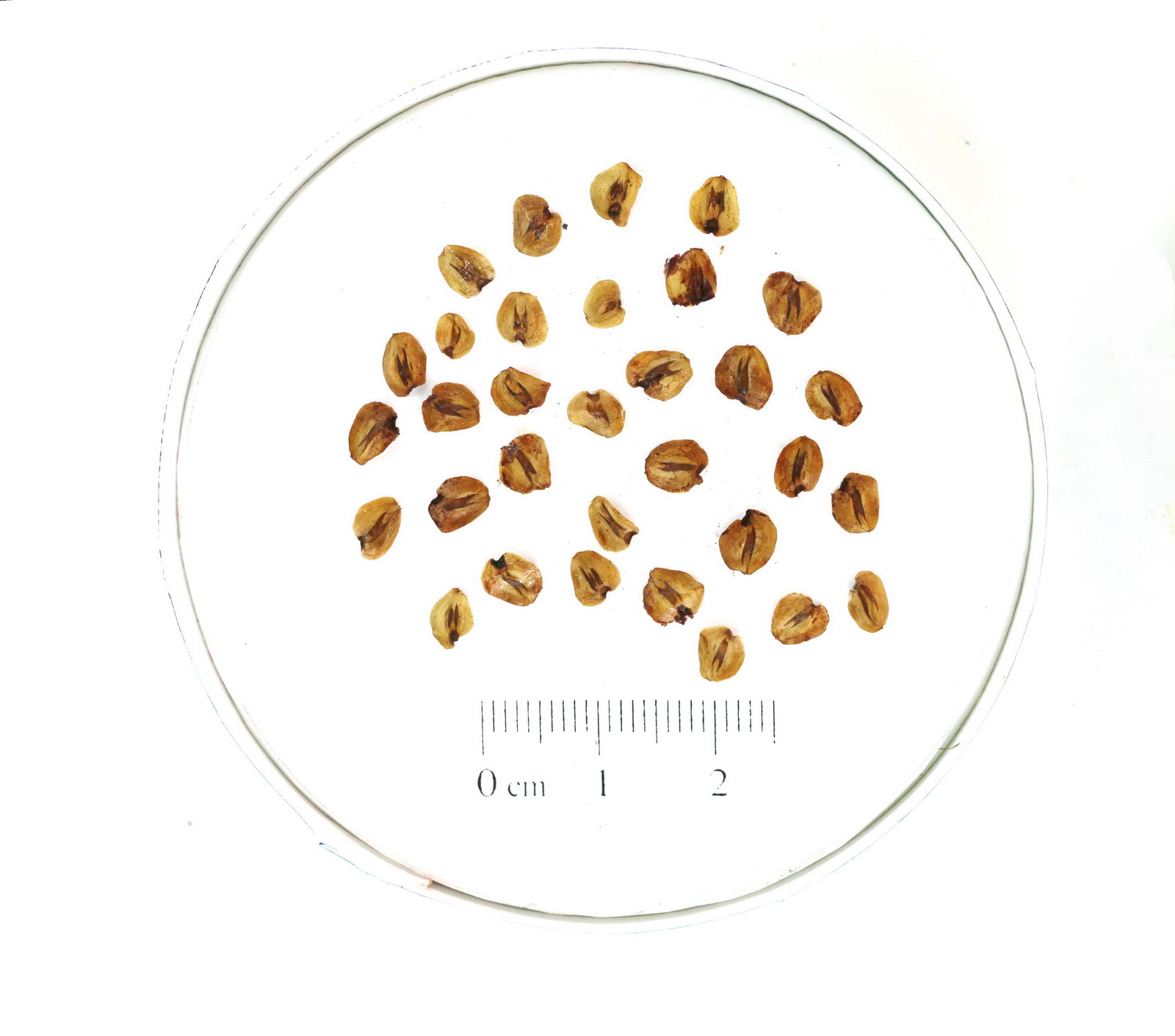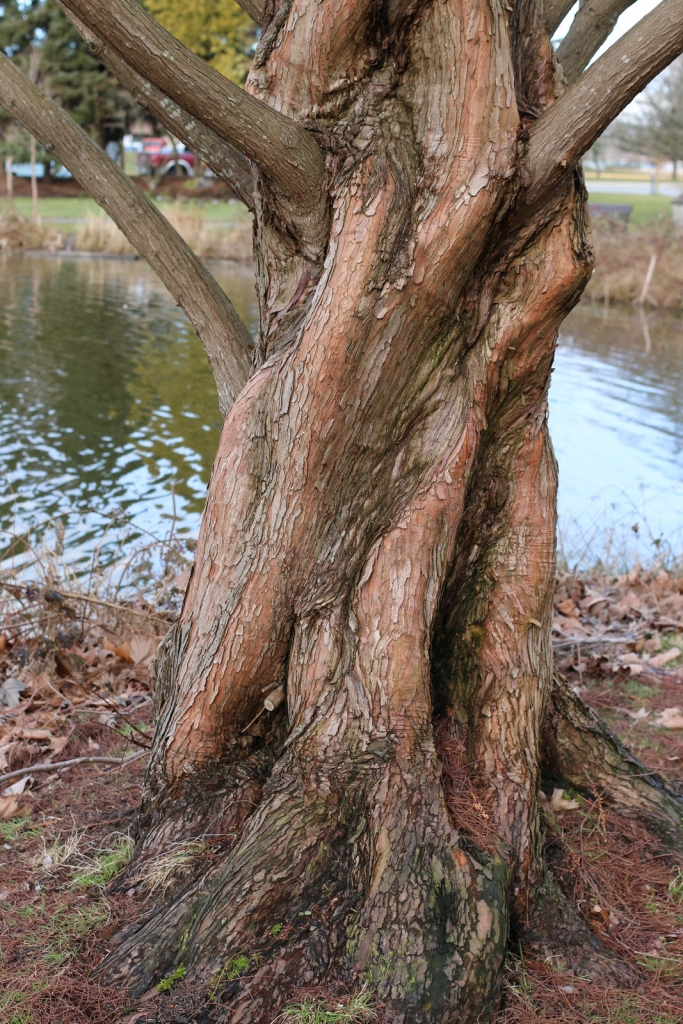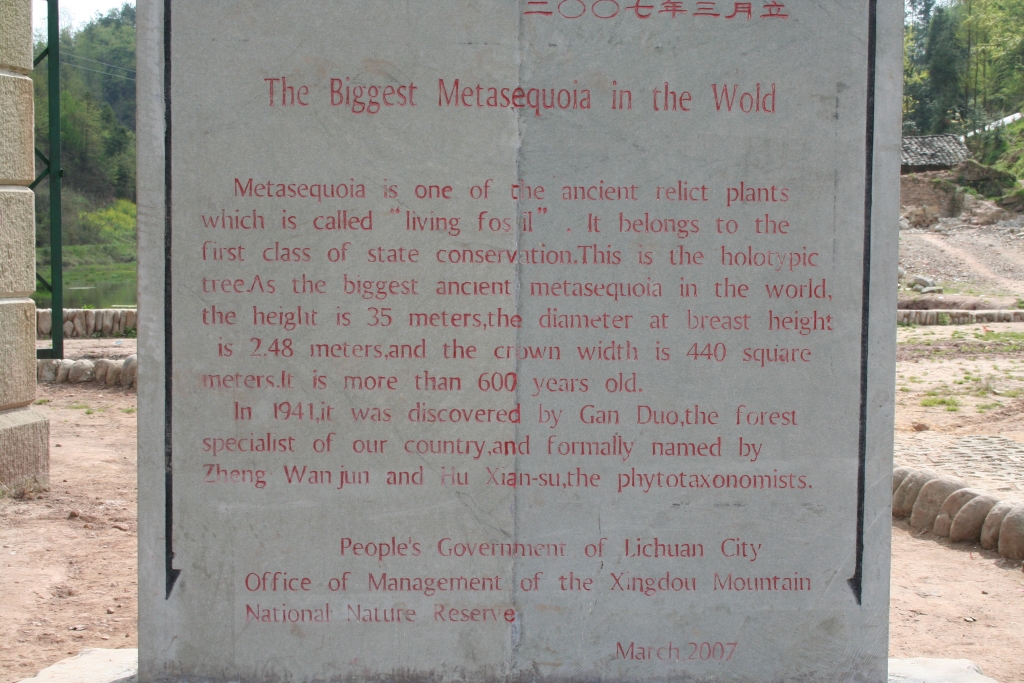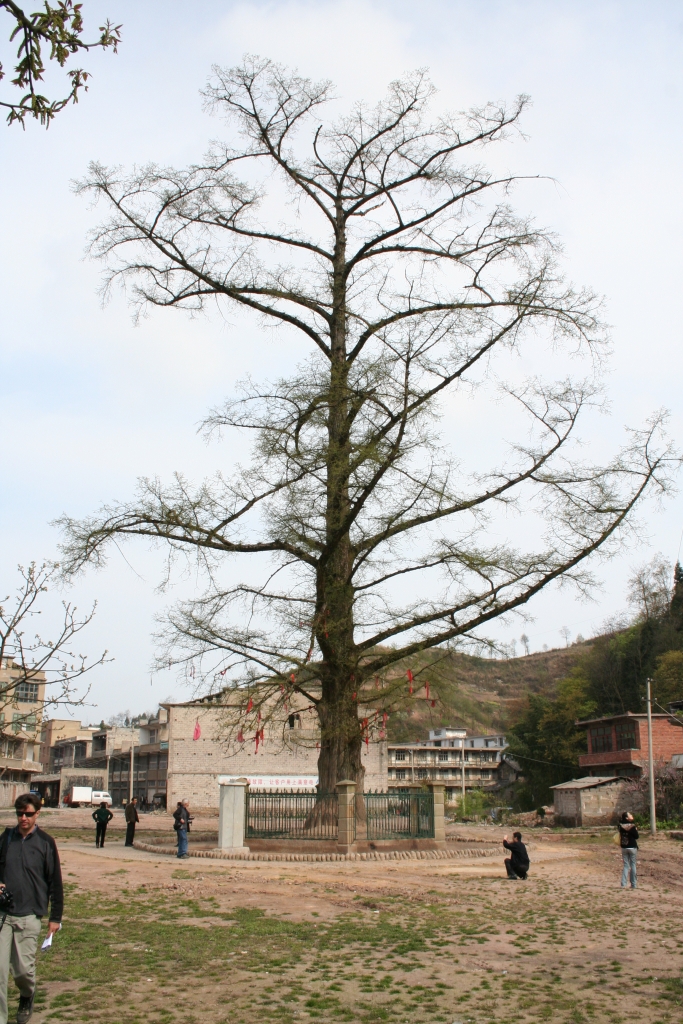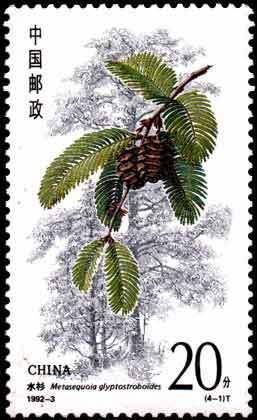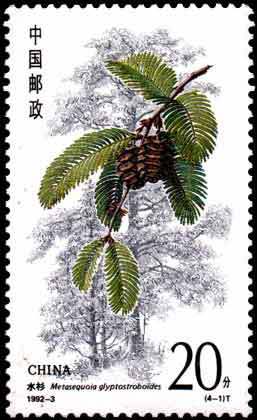
Metasequoia glyptostroboides, as described in 1948 by Wan Chun Cheng and Hu Hsen Hsu, in Bulletin of the Fan Memorial Institute of Biology, is commonly known as dawn redwood, water fir, or water larch; as well as æ°´æ‰ (shui shan) in the Chinese language, which literally translates to "water fir." It is the sole species in Metasequoia S. Miki (1941), a genus initially described from fossil material. Shigeru Miki (1901-1974) of Kyoto University, studying fossil samples of the family Cupressaceae, isolated a divergent leaf form that led him to describe a new genus, which he named Metasequoia, meaning "like a sequoia." Only in 1946 was the connection made between Miki's new genus and the living samples identified by Kan and Wang. Professor Hu Xiansu (1894-1968) is credited with making this important connection, and providing the specific epithet "glyptostroboides," after its resemblance to the Chinese swamp cypress (Glyptostrobus).
Description. Dawn redwood is a deciduous coniferous species of tree which will quickly grow to mature heights of 145 feet (45 m) tall, with a tapering trunk broadening to the buttressed base. Its crown is conical when young, broad and rounded with age.
Distribution. This species is native to China. Its primary occurrence is near the Sichuan-Hubei border, ca. 30°10'N, 108°45'E, with an outlying occurrence in northwestern Hunan province at elevations of 2,400 to 4,800 feet (750 - 1,500 m) above sea level. It is also found in eastern Sichuan, southwestern Hubei, and northwestern Hunan provinces, at 2,400 to 4,800 feet (750 - 1,500 m) elevation, where it is typically found on shady, moist sites such as ravines and stream banks.
Hardy to USDA Zone 4 - cold hardiness limit between -30° and -20°F (-34.3° and -28.9°C).
